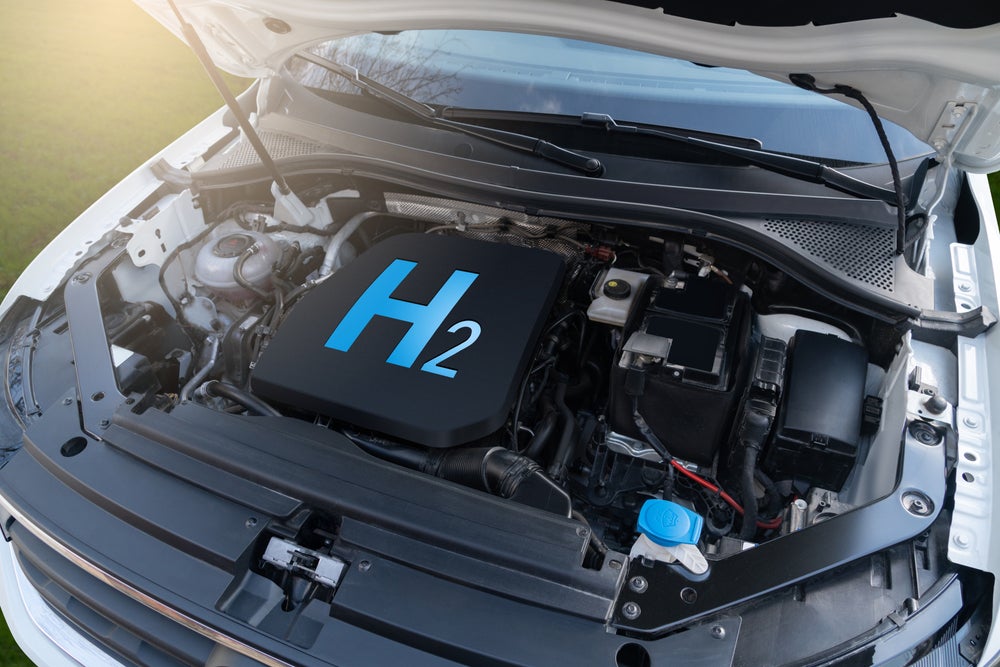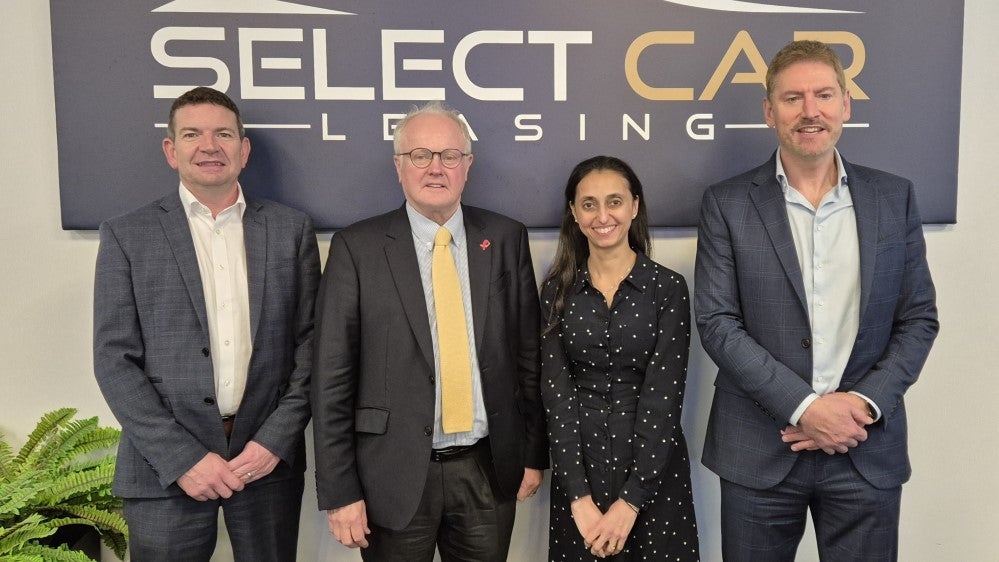
Hydrogen has always been a key ingredient in the manufacturing of numerous industrial chemicals, from methanol and ammonia to crude oil refining applications. But as the energy transition rolls on, the “hydrogen economy” has been introduced to disrupt the sector by using hydrogen as a fuel in itself.
Hydrogen has seen use in a wide range of sectors. Buildings alone account for 30% of its final energy use with nearly 75% of that going towards space heating, hot water production and cooking. However, that use is currently being reevaluated. Demonstration projects are looking at the possibility of blending hydrogen into the natural gas grid.
The UK has launched a groundbreaking hydrogen trial project, HyDeploy, at the Keele University. The £7 million pilot project is a partnership between several organisations, including Northern Gas Networks, Keele University, the Health and Safety Executive (HSE) Science Division, ITM-Power, and Progressive Energy. The zero carbon hydrogen being injected into Keele University’s gas grid is feeding around 100 houses and 30 faculty buildings.
As a fuel, it ticks a lot of boxes. It is clean-burning, abundantly available, and capable of working in tandem with renewable energy from solar, wind and other sources. When deployed for electrification purposes it can act as a carrier for renewable energy.
While the hydrogen economy develops, it has the potential to set the stage for the fulfilment of decarbonisation objectives within the next few decades. To achieve that, the groundwork must be laid for upgraded technology and test models that will help the hydrogen economy flourish.
The governments of the world’s leading economies are working with the private sector to do this, introducing tax breaks and subsidies to drive the rapid adoption of the hydrogen economy in China, the US and some nations in Europe.
How well do you really know your competitors?
Access the most comprehensive Company Profiles on the market, powered by GlobalData. Save hours of research. Gain competitive edge.

Thank you!
Your download email will arrive shortly
Not ready to buy yet? Download a free sample
We are confident about the unique quality of our Company Profiles. However, we want you to make the most beneficial decision for your business, so we offer a free sample that you can download by submitting the below form
By GlobalDataSo, it is no surprise to see hydrogen being looked at as a potential power source for vehicles in general, and cars in particular.
Vehicles powered by hydrogen are called fuel cell electric vehicles or FCEVs, and compared to battery-based electric vehicles, hydrogen-powered fuel cells offer a better driving range per refuel. Hydrogen fuel cell electric vehicles can also refuel much more quickly than BEVs, and these fuel cells offer much higher energy storage density than batteries while being significantly lighter in weight, and their emissions are nothing but water.
At the same time, hydrogen fuel cells powering an electric motor boast two to three times greater efficiency than petrol-fuelled internal combustion engine-powered vehicles (although hydrogen is less effective as the sole fuel for an ICE vehicle without fuel cells.
These are some of the reasons why the BMW Group, as the first German carmaker to have joined the “Business Ambition for 1.5°C campaign”, views FCEV technology as a potential addition to the drive technology used by battery-electric vehicles. The next step in BWM’s journey to achieving full climate neutrality throughout its value chain involves the car manufacturer’s plan to reduce CO2 emissions per vehicle over its full lifecycle by at least 40 per cent by 2030 compared with 2019.
The BMW Group wants FCEVs to supplement its BEV range and has launched a pilot fleet of iX5 Hydrogen vehicles following four years of development work. Although the fleet currently consists of fewer than 100 vehicles, they have already been driven across Europe, Japan, South Korea, China, USA and the Middle East.
But FCEVs’ value in reducing emissions is not just about the technology in the vehicles. It is also about where that hydrogen fuel comes from.
“This technology can only be used in an economically and ecologically meaningful way if, in the long term, hydrogen is produced from renewable energies, stored appropriately, and made available in sufficient quantities and at competitive prices for use in the transport sector,” says Chris Overall, Corporate Communications at BMW Group UK. “This is a task for society as a whole and is being promoted by a diverse range of political initiatives and development programmes.”
There are two types of hydrogen fuel to consider. The first is blue hydrogen, which is produced when natural gas is mixed with a catalyst and hot steam. The second is green hydrogen, which is produced by electrolysis powered by renewable sources such as wind, hydro and solar power.
“The fact is that most operators in the fleet sector are probably not equipped to make informed differentiation between the two, and the debate that takes place is likely to be condensed down into simple but not necessarily well-informed terms – that green hydrogen is preferable and less polluting but expensive, while blue is environmentally questionable but cheaper and where most UK future production investment is heading,” explains Peter Golding, Managing Director of fleet management software firm, FleetCheck.
“The bottom line is that the majority of hydrogen sold in the UK is blue anyway and, given the direction of government investment, that’s likely to remain the case for some time to come. It seems probable that most fleets – faced with a hydrogen fuelling infrastructure that only just runs into double figures in terms of public outlets – simply won’t have any kind of choice.”
For green hydrogen to make a larger proportion of the growing hydrogen market, bigger investments will need to be made in creating a stronger supply.
“The only way out of this conundrum for most would be to bunker green hydrogen and, to be fair to Vauxhall, they are partnering with a company called Ryze to provide green hydrogen solutions to fleets either as individual or shared facilities, but they are unlikely to be cheap,” Golding says. “Only the very biggest van operators will be able to make this kind of move or take this kind of risk. Ultimately, the green or blue question may well look like another barrier to most fleets.”
A Hybrid Solution
BMW’s approach is that BEVs and FCEVs complement each other in a multi-pronged approach to carbon reduction.
“Both use different variants of the same electric drivetrain and increase overall technology competition by promoting innovations and advances aimed at reducing the environmental impact of transport,” says Overall. “As a result, both fuel-cell and battery technologies are experiencing major cost reductions and are becoming increasingly competitive against internal combustion engines. BEVs currently have lower overall operating costs than FCEVs in the passenger car sector, but this gap is expected to close in various segments over this decade or in the 2030s.”
Hydrogen transport constitutes only a 0.5% share of new low-carbon sales, but a large proportion of fuel cell-powered vehicles used in road transport are cars, and FCEVs are a rapidly expanding section of the market. In the USA, there are over 8,039 fuel cell cars on the road and 64 hydrogen refuelling stations in operation. Globally, the number of FCEVs doubled to 25,210 units in 2019, with approximately 12,350 new vehicles sold.
Between them, Toyota, Hyundai and Honda produce the majority of passenger car FCEVs. Other major manufacturers have entered the market, but only briefly. Mercedes Benz’s GLC F-CELL vehicle, a plug-in hybrid with a fuel cell, wound down production in 2021, citing it as both costly and not commercially viable. Toyota, however, has set a target of 30,000 FCEVs manufactured annually.
While the vehicle count for fuel cell-based light vehicles is still expected to occupy 0.5% of the market by 2035, in that year that percentage will exceed 500,000 vehicles, particularly as various governments work to reduce carbon emissions and introduce policies favourable to the hydrogen economy. But some are sceptical about that growth.
“Hydrogen has for a long time been what you might call a ‘five years away’ transport option, something where the technology was promising but always just out of reach,” Golding says. “Recent developments, such as the arrival of the Vauxhall Vivano van, make it feel as though it has potentially moved closer but whether it has really done so for the vast majority of fleets is a moot point. There remain major stumbling blocks – including the almost complete absence of refuelling infrastructure, the probable high purchase price of the vehicles, and unknown disposal values.”
Disposal values have been an issue for all zero-emission vehicles, as new technology is by necessity untested in the used vehicle market, but BMW is optimistic.
“From our perspective, it is far too early to speculate about this aspect of the technology,” Overall says. “However, we are considering what happens to our cars and components when they reach the end of their life. BMW is investing a lot to recover valuable materials and place them back into a material cycle.”
In the UK, as well as in EU regulations, it is currently required that 95% recovery and 85% recycling targets, by average weight, must be met. These regulations also require the availability of collection points that offer free take-back of end-of-life vehicles.
Overall points out, “In the UK, BMW Group partners with Autogreen Ltd to provide a Government-approved national network of certified dismantling companies to ensure that this is done in a responsible way.”
However, BMW still acknowledges that hydrogen vehicles face challenges ahead of widespread adoption.
“In addition to the general ramp-up of the hydrogen industry, there also needs to be a common understanding of approval procedures and standardisation across all EU member states and globally,” Overall says. “Hydrogen can also play a key role in increasing resilience in energy supply due to its transport and storage capabilities. Increasing the availability of hydrogen from renewable energy sources at competitive prices is therefore an urgently needed building block in the decarbonisation of production and mobility.”
Overall also points to potential synergies between different fields of application such as commercial vehicles and passenger cars, which represent unique opportunities to further reduce costs and develop a strong supplier network for hydrogen technology.
Indeed, 90 countries have already announced their intention to become carbon neutral by 2050, and 359 major investments (totalling $500 billion) have been made in the development of hydrogen technology.
As well as world governments, and industry leaders will also need to invest in fuel cells and the hydrogen economy for it to be a success. Most of that growth is expected to come from markets in Western and Central Europe and East Asia. But even where fuel cell vehicles are penetrating the transportation market and even overtaking the adoption of BEVs, cost competitiveness and a lack of fuelling infrastructure present serious medium-term obstacles.
In the long term, however, FCEVs are expected to become a serious competitor, even if they struggle to compete with their BEV counterparts. In numerous countries around the world, governments have set ambitious targets for FCEV deployment. Japan wants to have 200,000 vehicles on the road by 2025, growing to 800,000 by 2030, while the Netherlands has set a target of 18,000 FCEVs by 2025 and 300,000 by 2030. France, meanwhile, is aiming to have 52,000 FCEVs by 2028.
BMW’s new FCEV fleet intends to be a bridge towards those targets.
“The mission of our iX5 Hydrogen fleet is to inform and help people get acquainted with the technology,” Overall says. “As a premium manufacturer, the BMW Group already sells vehicles to customers worldwide with different mobility needs. It makes sense for the BMW Group to pursue a mix of battery-electric and fuel cell-electric drivetrains in the long term. In our view, hydrogen is the missing piece which can complete the electric mobility jigsaw in areas where battery-electric drive systems are not a viable solution.”
It is a view that is increasingly shared around the world. The IEA Report in January last year argued that hydrogen will play a vital role in global climate change efforts, and its role in individual mobility is important to that.
“We are convinced that hydrogen will play an increasingly important role in passenger cars,” Overall says. “The pathway to that point includes its use in commercial vehicles and supply via a refuelling infrastructure that meets the needs of all mobility applications.”
Hydrogen fuel cell cars: four things you should know
Van operators starting to “take hydrogen seriously”, says AFP
Driving Sustainability: Strategies for fleets to navigate the road to net zero







